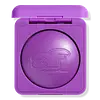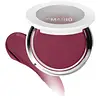What's inside
What's inside
 Key Ingredients
Key Ingredients

 Benefits
Benefits

 Concerns
Concerns

 Ingredients Side-by-side
Ingredients Side-by-side

Isodecyl Isononanoate
EmollientSilica
AbrasiveOctyldodecyl Stearoyl Stearate
EmollientIsodecyl Neopentanoate
EmollientC12-15 Alkyl Benzoate
AntimicrobialSynthetic Wax
AbrasiveMethyl Methacrylate Crosspolymer
Dicalcium Phosphate
AbrasiveLimnanthes Alba Seed Oil
Skin ConditioningSynthetic Fluorphlogopite
CI 77891
Cosmetic ColorantCI 45410
Cosmetic ColorantTocopheryl Acetate
AntioxidantCI 42090
Cosmetic ColorantPentaerythrityl Tetra-Di-T-Butyl Hydroxyhydrocinnamate
AntioxidantRicinus Communis Seed Oil
MaskingHydrolyzed Sodium Hyaluronate
Skin ConditioningSodium Hyaluronate
HumectantHydrogenated Castor Oil
EmollientIsodecyl Isononanoate, Silica, Octyldodecyl Stearoyl Stearate, Isodecyl Neopentanoate, C12-15 Alkyl Benzoate, Synthetic Wax, Methyl Methacrylate Crosspolymer, Dicalcium Phosphate, Limnanthes Alba Seed Oil, Synthetic Fluorphlogopite, CI 77891, CI 45410, Tocopheryl Acetate, CI 42090, Pentaerythrityl Tetra-Di-T-Butyl Hydroxyhydrocinnamate, Ricinus Communis Seed Oil, Hydrolyzed Sodium Hyaluronate, Sodium Hyaluronate, Hydrogenated Castor Oil
C15-19 Alkane
SolventOctyldodecanol
EmollientTridecyl Trimellitate
EmollientPentaerythrityl Tetraisostearate
EmollientSynthetic Wax
AbrasiveSynthetic Fluorphlogopite
Raphanus Sativus Seed Extract
Skin ConditioningMicrocrystalline Wax
Emulsion StabilisingSilica Silylate
EmollientHydrogenated Rice Bran Wax
Skin ConditioningDicalcium Phosphate
AbrasiveDisteardimonium Hectorite
StabilisingHelianthus Annuus Seed Oil
EmollientOryza Sativa Bran Wax
Skin ConditioningPentaerythrityl Tetra-Di-T-Butyl Hydroxyhydrocinnamate
AntioxidantRosmarinus Officinalis Leaf Extract
AntimicrobialTocopheryl Acetate
AntioxidantRicinus Communis Seed Oil
MaskingHydrolyzed Sodium Hyaluronate
Skin ConditioningSodium Hyaluronate
HumectantHydrogenated Castor Oil
EmollientCI 77891
Cosmetic ColorantCI 77491
Cosmetic ColorantCI 42090
Cosmetic ColorantCI 15850
Cosmetic ColorantCI 19140
Cosmetic ColorantC15-19 Alkane, Octyldodecanol, Tridecyl Trimellitate, Pentaerythrityl Tetraisostearate, Synthetic Wax, Synthetic Fluorphlogopite, Raphanus Sativus Seed Extract, Microcrystalline Wax, Silica Silylate, Hydrogenated Rice Bran Wax, Dicalcium Phosphate, Disteardimonium Hectorite, Helianthus Annuus Seed Oil, Oryza Sativa Bran Wax, Pentaerythrityl Tetra-Di-T-Butyl Hydroxyhydrocinnamate, Rosmarinus Officinalis Leaf Extract, Tocopheryl Acetate, Ricinus Communis Seed Oil, Hydrolyzed Sodium Hyaluronate, Sodium Hyaluronate, Hydrogenated Castor Oil, CI 77891, CI 77491, CI 42090, CI 15850, CI 19140
Ingredients Explained
These ingredients are found in both products.
Ingredients higher up in an ingredient list are typically present in a larger amount.
Ci 42090 is a synthetic dye created from petroleum. It is used to give a bright blue color to cosmetics, medicine, and food.
Ci 77891 is a white pigment from Titanium dioxide. It is naturally found in minerals such as rutile and ilmenite.
It's main function is to add a white color to cosmetics. It can also be mixed with other colors to create different shades.
Ci 77891 is commonly found in sunscreens due to its ability to block UV rays.
Learn more about CI 77891Dicalcium Phosphate is an exfoliant.
Hydrogenated Castor Oil is created by adding hydrogen to castor oil. This helps stabilize the castor oil and raises the melting point. At room temperature, hydrogenated castor oil is solid.
Castor Oil helps moisturize the skin. It is rich in a fatty acid called ricinoleic acid. This fatty acid helps prevent moisture loss on the skin. This helps keep your skin soft and hydrated. Ricinoleic acid also has anti-inflammatory and pain reducing properties.
As a wax-like substance, Hydrogenated Castor Oil acts as an emollient. Emollients help keep your skin stay soft and smooth by creating a barrier. This barrier helps trap moisture.
Hydrogenated Castor Oil may not be fungal-acne safe. We recommend speaking with a professional.
Learn more about Hydrogenated Castor OilThis ingredient is created by putting sodium hyaluronate through hydrolysis.
You might know this as 'mini' or 'ultra low-molecular weight' hyaluronic acid. The small molecule size means it is able to travel deeper in the skin.
According to studies, low molecular-weight hyaluronic acid can:
One study from 2011 found ultra-low weight HA to show pro-inflammatory properties. Another study from 2022 found it to downregulate UV-B induced inflammation.
Hydrolysis is a process of changing a molecule using water or enzymes.
This ingredient is water-soluble.
Learn more about Hydrolyzed Sodium HyaluronatePentaerythrityl Tetra-Di-T-Butyl Hydroxyhydrocinnamate (long name, huh?) is a synthetic antioxidant.
It is used to help stabilize other antioxidants or prevent the color from changing in a product.
As an antioxidant, it helps fight free-radical molecules. Free-radical molecules are capable of damaging our cells and other genetic material. Thus, antioxidants may reduce the signs of aging.
This ingredient is oil-soluble.
Learn more about Pentaerythrityl Tetra-Di-T-Butyl HydroxyhydrocinnamateRicinus Communis Seed Oil is the INCI name for castor oil.
Castor Oil helps moisturize the skin. It is rich in a fatty acid called ricinoleic acid. This fatty acid helps prevent moisture loss on the skin. This helps keep your skin soft and hydrated. Ricinoleic acid also has anti-inflammatory and pain reducing properties.
Besides hydrating the skin, castor oil is also used to hydrate hair. By keeping the hair shaft moisturized, breakage is decreased. More studies are needed to show castor oil's effective on stimulating hair growth.
Castor oil is created by cold-pressing castor seeds and then purifying the oil with heat. It was used in Ancient Egypt as fuel in lamps and to help treat eye irritation.
The term 'fragrance' is not regulated in many countries. In many cases, it is up to the brand to define this term. For instance, many brands choose to label themselves as "fragrance-free" because they are not using synthetic fragrances. However, their products may still contain ingredients such as essential oils that are considered a fragrance.
Learn more about Ricinus Communis Seed OilSodium Hyaluronate is hyaluronic acid's salt form. It is commonly derived from the sodium salt of hyaluronic acid.
Like hyaluronic acid, it is great at holding water and acts as a humectant. This makes it a great skin hydrating ingredient.
Sodium Hyaluronate is naturally occurring in our bodies and is mostly found in eye fluid and joints.
These are some other common types of Hyaluronic Acid:
Learn more about Sodium HyaluronateSynthetic Fluorphlogopite is the synthethic version of mica. It consists of fluorine, aluminum and silicate.
Synthetic Fluorphlogopite is used to add volume to products.
It is considered non-irritating on the skin.
Learn more about Synthetic FluorphlogopiteSynthetic Wax is created from fossil fuels such as natural gas. It is used to enhance texture, adjust pH, and as an occlusive.
It may also be used as an abrasive ingredient to exfoliate the skin.
Synthetic Wax may not be fungal acne safe.
Learn more about Synthetic WaxTocopheryl Acetate is AKA Vitamin E. It is an antioxidant and protects your skin from free radicals. Free radicals damage the skin by breaking down collagen.
One study found using Tocopheryl Acetate with Vitamin C decreased the number of sunburned cells.
Tocopheryl Acetate is commonly found in both skincare and dietary supplements.
Learn more about Tocopheryl Acetate